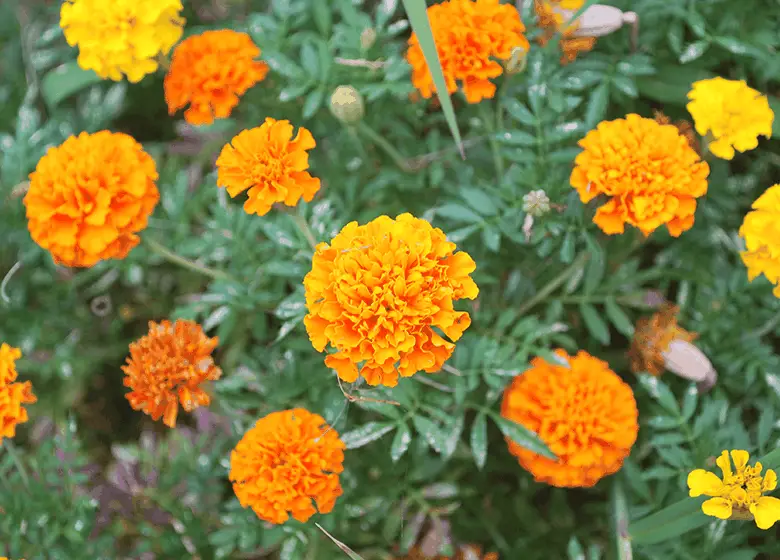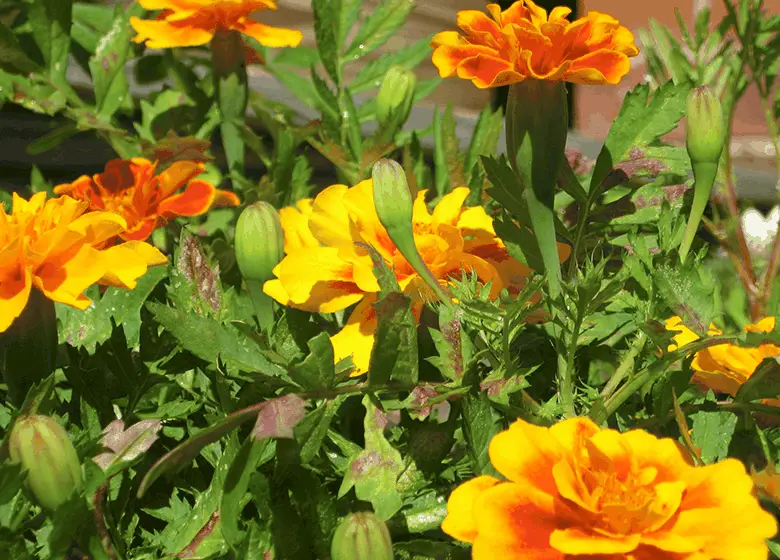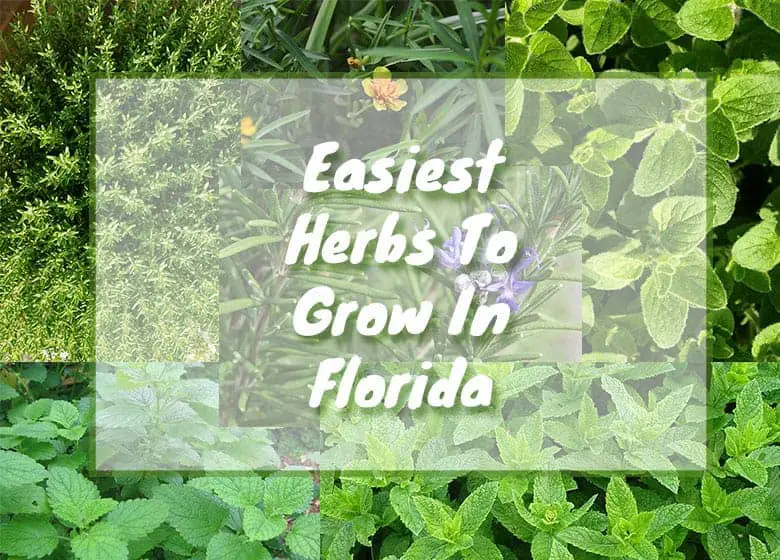You should grow marigolds in Florida, but can such a pretty flower take our intense heat?
Can you grow marigold in Florida? Yes, Marigolds bloom in many Florida gardens because they thrive all summer. They are quite easy to cultivate and have minimal disease and pest problems. It is a reliable Florida annual and one of the region’s fastest growers.
It has full flower blossoms in various hues including orange, yellow, red, and maroon.
Varieties Of Marigolds
Marigolds come in African and French varieties. The African marigold is characteristically double and large, with yellow to orange flowers. The flowers measure up to five inches across.

The plant varies in height between 10 to 36 inches. They make good bedding plants, and the tall varieties are ideal as background plantings. You can use African marigolds to brighten up your garden because of their bright blooming colors.
Despite their name, the plant is indigenous to the Americas. They are easy to grow, reach higher heights than French marigolds, and contain some of the largest blooms in the entire marigold family.
French marigold is native to Guatemala and Mexico. It is an annual, and it reaches heights of between 1.0 to 1.6 ft.
Its natural habitat is Central Mexico’s highlands, where it blooms from September. The plant’s head mostly features hermaphrodite florets and is mostly pollinated by beetles and tachinid flies in the wild.

The French Marigold stands out due to its brightly colored blooms in hues of yellow, brown, and orange. It is popularly grown as a companion plant for numerous vegetable crops. It has a more spreading habit and is shorter than the African marigold.
Planting Marigolds in Florida
Marigolds are quite easy to plant and maintain. Your planting method will depend on where you are growing them, including:
Planting Outdoors
Wait for early spring to initiate the planting process for north and central Florida. South Florida can plant at any time of the year. Marigolds do not enjoy frost. It is best not to plant the seeds too early.
Ensure that the planting soil is not too dry and sandy. Marigolds thrive in well-drained and loamy soils because water can travel easily. Before planting your marigolds, weed the area you have mapped for cultivation to make it more hospitable.
Mix organic compost or even well-aged manure and place it in the soil to give the marigolds nutrients.
The soil should be warm on the day of planting. Cold soil can hamper growth. Dig about 8 to inches into the soil, and turn it over to make it airy. The marigold seeds should be sown a few inches apart.
If they are planted in close proximity, they could interfere in the growth of each other. Cover the sown seeds with a quarter inch of soil. They should not be too exposed to grow well.
Transplanting Marigolds
Marigolds can be transplanted using seedlings, which are about 1 to 3 inches tall. It is possible to transplant them when they are fully-bloomed, but you will get better results with seedlings.
The soils should have similar temperatures. If the soils have substantially varying temperatures, your marigolds may suffer from shock and fail to bloom. When picking a transplant spot, opt for one that receives a lot of sunlight.
Dig about six inches and turn the soil over to sift through it. Break up big lumps and remove any rocks. Make a hole similar in size to the marigold root ball soil.
Gently retrieve the seedling and keep some of the material around the plant’s roots. Place it in the hole and pat additional soil around it. Space the marigolds 4 to 6 inches apart.
Planting in Pots
Indoor marigolds should be planted in early spring. You can begin six to eight weeks prior to the last frost date. The indoor plants can be grown earlier because you do not have to be careful about the soil being too cold for the marigolds.
Use a pot filled with soilless potting mix, with materials like bark and peat. The pot should feature drainage pots in the bottom to let water pass naturally. A plate and board will trap this excess water.
Container marigolds can be sown close together, but give them several inches of space. Cover the marigold seeds with a quarter of soil.
The temperature should be maintained at around 70 degrees. Check the thermostat, and you can even buy a heating pot to maintain this temperature. Direct sunlight should be avoided until germination.
Caring for Marigolds
Marigolds are best-watered at the base semi-regularly. Once a week will do as you want to avoid weakening the plant with excess water. The soil should be moist but not soaked.
Mildew may form if you water the plant at the top. Water marigolds on more occasions during drought. The soil should dry out in-between waterings.
Some fertilizer can be added when transplanting but it is optional. Marigolds cultivated in-ground typically do not need fertilizer. If fertilizer is included in the growing phase, it can facilitate foliage growth instead of flower production. You can water in diluted liquid fertilizer for potted marigold.
Use gardening shears to snip off dead blooms or branches for the plant to grow more freely. You can stake marigolds when the weather gets windy. It will keep your plant upright and help it live through storms.
If you are growing potted marigolds, take care not to crowd them. Healthy marigolds need a lot of air circulation. One marigold can be kept in a 6-inch pot, although two or three will grow well in a 12-inch container.
Ensure the pot features a drainage hole at the bottom. The potting mix should be lightweight and high quality. To improve drainage, you can add a handful of sand, vermiculite, and perlite.
The pot should be placed such that the plant receives six hours of sun exposure. Watering should be done when the top 2 inches of soil is dry. The soil should not be soggy, and it should dry up before more water is added.
During humid and moist summers, marigolds sometimes get a powdery substance on the leaves. This mildew comes about if they are not obtaining sufficient airflow.
Creating space between the marigolds will prevent this problem. Insects do not bother marigolds because they emit a pungent odor.
Caterpillars can, however, chew on the leaves, and stunt the plant’s growth. Dry marigolds also attract spider mites, although this infestation can be kept at bay by watering the plants. Root rot can form if you overwater the plant.
Benefits and Uses of Marigolds
Gardeners plant marigolds due to its endearing attributes. To start, they add a good aesthetic to your garden due to their bright hues and beauty.
They are also easy to cultivate while care is simple. The plants can even survive neglect. Marigolds produce a pungent scent due to chemicals like pyrethrin, which is used in insect repellants.
The plants are naturally insect repellants for creatures like mosquitoes. They also repel pests like roundworms and beetles, making it an excellent companion plant.
In history, the Greeks used marigold petals for decoration but also appreciated the plant’s uses like for dying fabrics, coloring food, make-up, and for medicinal uses.
Marigolds became common in European gardens in the 12th century. By the 14th century, it was being regarded highly for its varied �magical powers.’ During World War I as well as the American Civil War, the plant was used to prevent injuries from being infected.
You will find endless uses for the marigolds in your garden. You can accommodate the plant in your kitchen as a food decoration.
The flowers are edible, and they provide a flash of color to food like cake, cookies, and sandwiches. Rinse the flowers carefully to get rid of bugs and dirt. Marigolds also have a place as part of a floral arrangement.
They are attractive and have better-staying power when compared to carnations.
Marigold is also commonly used as a saffron substitute. It may not have a saffron flavor, but marigolds bring vibrant coloring. Saffron can be expensive, and with marigolds you get bright colors and a herbal flavor.
Marigolds are pest deterrent and can be effectively used as bug repellants. You can blend a mix of marigolds and water to make your own insect repellant and spray into infested plants.
The medicinal benefits of marigolds include:
Marigold powder is used as a baby powder to treat diaper rash. Its healing attributes are more effective than those of talc.
It has high concentrations of flavonoids, which are good anti-oxidants for ailments like coughs and snake bites.
Marigold is also used to heal wounds, eczema, warts, cuts, burns, and bruises.
The plant can also relieve varicose veins and clear them entirely.
Marigold additionally detoxifies the digestive system and facilitates the healing of viral inflammations like peptic ulcers and gastritis.
Its antiseptic properties will speed up the recovery of mumps and measles.
It has an estrogenic effect on the female reproductive systems.
Marigolds are also used after childbirth to promote the recovery of perineum rips and any other incisions that were done during childbirth. It can be used alone or supplemented with arnica treatments. Marigold ointments are also recommended for birthing scars.
It also stops bleeding, thanks to its astringent actions.
Marigold can be used to soothe cold sores and sore throats.
Growing Marigolds In Florida
- African and French varieties can both be grown in the state
- South Florida and some parts of central Florida can grow marigolds year round but frost and freeze will damage the plants
- It is an easy to care for plant and provides many benefits to the garden as well as you
- It attracts good bugs and repels bad ones.
- Marigolds have been used throughout history to aid in healing.
You Might Also Be Interested In:

